BENEFIT: An Energy Management Platform for Smart and Energy Efficient Buildings
Abstract
1. Introduction
- Data management involves handling both static and dynamic data collected from various acquisition points equipped with IoT sensors capable of measuring different parameters, such as temperature, humidity, energy consumption, pressure, and thermal comfort, depending on sensor placement and the overarching objective set by the DM.
- Data security and system integrity are safeguarded against cyber threats by three main measures: unique and confidential MAC addresses for network devices, hardware key coding using 128-bit AES for all data exchanges within the network, and strict regulation of node access to remote terminal units (RTUs) and data concentrators (CDs).
- A software application is developed and integrated to supervise, manage, and monitor the building, complemented by a Building Simulation Tool to improve energy efficiency. Remote control and access features enabled advanced automated control, monitoring, management, and maintenance of systems and services, both on-site and remotely, in a seamless and coordinated manner.
- Identifying recommended actions that suggest measures to improve energy efficiency and optimize energy transfer within the building. The platform selects these actions using complex decision-making processes that consider data from multiple sources, detected events, and various situational constraints.
2. Background Literature Review
- Predefined control strategies are connected to systems that operate based on fixed energy management plans. For instance, HVAC and lighting systems activate only when certain thresholds are reached, with their control actions predetermined. As a result, these systems often fail to respond reliably and lack the ability to adapt to changing conditions, such as current or forecasted outdoor weather, occupancy levels, and activities within the building. Additionally, other high-energy-consuming devices are managed solely according to fixed operational schedules.
- Lack of integration refers to inadequate coordination between local energy generation within the building, overall energy consumption, and utility supply conditions. Currently, energy generation and consumption are treated as separate entities, lacking proper integration.
- Centralized control without efficiency algorithms means that, although these systems provide centralized management of energy-consuming resources, they lack specific energy efficiency algorithms.
- Integrating a smart user interface (SUI) that enables users to set energy schedules and receive notifications, thereby improving energy efficiency. The integrated smart BMES identifies the most energy-efficient actions to maintain comfort. The system offers cooperation and awareness services via this multimodal SUI, which is accessible through operating systems and mobile devices.
- Developing a simulation and analysis tool linked to the DesignBuilder software that utilizes data from all smart sensors and meters, providing precise information on variables such as temperature and building envelope properties, which are essential for calculating heat transfer. This allows for the estimation of heat input or removal by the air conditioning. The platform also includes a real-time consumption management algorithm that plans operations based on performance indicators, projected requirements, and flexibility. It adjusts schedules dynamically to match actual energy demand and optimizes resource use through multiple strategic algorithms.
3. Building Energy Management System Integrating Smart Automation
- The human–machine interface function provides an intuitive way for users to interact with connected technical systems.
- The system security function prevents unauthorized access by restricting each operator’s access to only the functions necessary for their specific tasks.
- The segregation function manages the data flow within the system, such as presenting information from various types of technical installations at designated operator stations.
- The alarm management function sequentially displays potentially dangerous situations or deviations in process values based on their importance and urgency, guiding the operator on required actions or informing them of automatic responses to alarms.
- The global occupancy scheduling function consolidates occupancy schedules from multiple substations into logical units, such as sections of a building, allowing the operator to modify them with a single action.
- The event recording function automatically logs alarms, operator changes, and other important events to a printer and/or hard disk.
- The reporting function clearly and effectively presents subsets of data related to the current or past states of process values on a screen or printer.
- The trend logging function automatically collects data from field equipment and stores it for future analysis.
- The plotting and charting function displays relationships of process values through plots and bar charts generated from dynamically or historically gathered data.
4. BENEFIT Management Platform—A Vision on Practical Implementation of Smart Energy Management Building Concept
- Data Management involves handling static or dynamic data collected from various acquisition points equipped with specialized sensors capable of measuring different parameters, such as temperature, humidity, energy consumption, pressure, and thermal comfort, depending on sensor placement and the overarching objective set by the DM.
- The Graphical User Interface (GUI) enables residents to access real-time data on monitored parameters within the BENEFIT platform. Furthermore, the platform allows residents to review detailed analyses that show how the monitored quantities of interest fluctuate over specified periods.
- Identifying the set of recommended actions is a crucial part of the management platform that suggests measures to users to improve energy efficiency and optimize energy transfer within the building. The platform determines these suggested actions through complex decision-making processes that incorporate data from various sources, detected events, and a series of situational constraints. The recommended actions can have an immediate effect (e.g., lowering the room temperature) or a long-term impact (e.g., modifying the building’s energy consumption).
4.1. Architecture
- The first layer consists of various devices and components within the management network, which may be active data collection devices or passive sensors. These are connected through different communication protocols within the data monitoring and management network and can transmit and receive data.
- The second layer comprises the communication protocols essential to RePowerTUI, enabling data exchange between devices on the monitoring network. Devices communicate using protocols such as ZigBee, LoRaWAN, WiFi, GSM/GPRS, or those specifically designed for sensor networks.
- The third layer pertains to monitoring, storage, and data analysis within the management network and operates on a server that provides vital services for the platform’s effective operation. These services, accessible to network devices, facilitate communication with the central server to send or receive relevant data. This enables devices responsible for data collection to transmit their gathered information to the management platform.
4.2. Data Acquisition
4.3. Data Security
4.4. Data Processing
4.5. Performance Indicators
4.6. BENEFIT Platform
- details—where each notification’s name is defined for future use. Additionally, if the event is validated on location and through specific data, the frequency range is specified.
- variables—for devices and sensors used within the premises, the notification variables and thresholds are established;
- conditions—for data received from sensors, the logical conditions that will trigger actions when the specified values are reached are set;
- actions—in the BENEFIT Platform, when a notification is issued, the corresponding actions are executed:
- A log of the records is created (for later use);
- An email is sent to the DM.
- notifications—the KPIs calculated by retrieving data from the involved sensors and using the variables. The values for the specified event are saved and can be exported for later use in a *cvs file, which is processed and displayed in various graphical representations.
5. Results
- They show the sizes of the center quartiles (Q1, Q2, and Q3).
- They display the interquartile range (IQR), calculated as Q3–Q1, which measures data spread.
- The IQR reveals the range of the middle 50% of the data, represented by the width of the “box”. The IQR indicates the range of the middle 50% of the data, essentially showing the width of the “box” on the box plot.
6. Discussion
- The multimodal user interface allows users to set their energy schedules and receive notifications, thereby enhancing energy efficiency. The integrated smart BMES identifies the most energy-efficient actions to maintain a comfortable environment within the building. Some of these actions will require user approval, such as delaying the operation of a programmable device for a specified period. Users can also specify their personal comfort preferences, such as preferred room temperatures. All these interactions involve building occupants. The management system provides various cooperation and awareness services through a multimodal interface, accessible via operating systems and mobile devices.
- The forecast tool can utilize data related to renewable energy production units, including solar collectors, photovoltaic panels, and wind turbines. It provides accurate information on key influencing variables, such as temperature and the static properties of the building envelope, which are critical for calculating heat transfer through walls. This enables the estimation of the heat that needs to be generated or removed by the air conditioning system. Additionally, the smart BMES features a real-time consumption management algorithm that ensures optimal actions are taken to meet the needs of users within the building. The algorithm, which depends on performance indicators, plans the operation of controllable energy units like heat, electricity, or both, as well as storage systems. It also determines the electricity to purchase from the energy supplier and manages load flexibility. Inputs include projected energy requirements, expected consumption, and their related flexibility. The schedule is adjusted dynamically in real time to match actual energy demand and the generation and storage units. Various strategic algorithms are integrated to achieve different objectives by adjusting resource control and consumption patterns, optimizing overall resource usage.
7. Conclusions
Author Contributions
Funding

Data Availability Statement
Conflicts of Interest
Abbreviations
| BENEFIT | Building Energy Efficiency in Totality |
| SBEM | Smart Building Energy Management |
| EU | European Union |
| EC | European Commission |
| GHG | Greenhouse Gas |
| WSN | Wireless Sensor Network |
| AMI | Advanced Metering Infrastructure |
| IA | Artificial Intelligence |
| ML | Machine Learning |
| DT | Digital Twins |
| IoT | Internet of Things |
| CPS | Cyber-Physical Systems |
| ECC | Edge and Cloud Computing |
| BIM | Building Information Modeling |
| SBA | Smart Building Automation |
| HVAC | Heating, Ventilation, and Air Conditioning |
| DM | Decision-Maker |
| RTU | Remote Terminal Units |
| DC | Data Concentrator |
| LSTM | Long Short-Term Memory |
| RNN | Recurrent Neural Network |
| GPR | Gaussian Process Regression |
| ANN | Artificial Neural Network |
| DMD | Dynamic Mode Decomposition |
| RES | Renewable Energy Sources |
| HEMS | Home Energy Management System |
| PV | Photovoltaic |
| KPI | Key Performance Indicator |
| DMS | Demand-Side Management |
| PLC | Programmable Logic Controller |
| PAC | Programmable Automation Controller |
| EMS | Energy Management System |
| OMT | Object Modeling Technique |
| 6LowPAN | IPv6 over Low-Power Wireless Personal Area Networks |
| RDAU | Remote Data Acquisition Units |
References
- Dwivedi, Y.K.; Hughes, L.; Kar, A.K.; Baabdullah, A.M.; Grover, P.; Abbas, R.; Andreini, D.; Abumoghli, I.; Barlette, Y.; Bunker, D.; et al. Climate Change and COP26: Are Digital Technologies and Information Management Part of the Problem or the Solution? An Editorial Reflection and Call to Action. Int. J. Inf. Manag. 2022, 63, 102456. [Google Scholar] [CrossRef]
- Wang, Y. Exploring the Importance of Sustainability in the Construction Industry. Appl. Comput. Eng. 2023, 9, 312–318. [Google Scholar] [CrossRef]
- Firoozi, A.A.; Oyejobi, D.O.; Firoozi, A.A. Innovations in Energy-Efficient Construction: Pioneering Sustainable Building Practices. Clean. Eng. Technol. 2025, 26, 100957. [Google Scholar] [CrossRef]
- European Commission. Energy Performance of Buildings Directive. Available online: https://energy.ec.europa.eu/topics/energy-efficiency/energy-performance-buildings/energy-performance-buildings-directive_en (accessed on 17 July 2025).
- Delavar, T.; Borgentorp, E.; Junnila, S. The Smart Buildings Revolution: A Comprehensive Review of the Smart Readiness Indicator Literature. Appl. Sci. 2025, 15, 1808. [Google Scholar] [CrossRef]
- European Union. Directive 2010/31/EU of the European Parliament and the Council on the Energy Performance of Buildings. Available online: https://eur-lex.europa.eu/eli/dir/2010/31/oj/eng (accessed on 17 July 2025).
- European Union. Directive 2009/28/EC of the European Parliament and the Council on the Promotion of the Use of Energy from Renewable Sources and Amending and Subsequently Repealing Directives 2001/77/EC and 2003/30/EC. Available online: https://eur-lex.europa.eu/legal-content/EN/ALL/?uri=celex:32009L0028 (accessed on 17 July 2025).
- European Union. Directive 2012/27/EU of the European Parliament and the Council on Energy Efficiency, Amending Directives 2009/125/EC and 2010/30/EU and Repealing Directives 2004/8/EC and 2006/32/EC. Available online: https://eur-lex.europa.eu/eli/dir/2012/27/oj/eng (accessed on 17 July 2025).
- European Union. Directive 2023/1791 of the European Parliament and the Council on Energy Efficiency and Amending Regulation (EU) 2023/955. Available online: https://eur-lex.europa.eu/eli/dir/2023/1791/oj/eng (accessed on 17 July 2025).
- European Commission. The European Green Deal: Striving to Be the First Climate-Neutral Continent. Available online: https://commission.europa.eu/strategy-and-policy/priorities-2019-2024/european-green-deal_en (accessed on 17 July 2025).
- European Commission. REPowerEU: Affordable, Secure and Sustainable Energy for Europe. Available online: https://commission.europa.eu/topics/energy/repowereu_en (accessed on 17 July 2025).
- Resch, G.; Liebmann, L.; Geipel, J.; Hasengst, F.; Hendricks, D.; Vollmer, J.; Fouquet, D. Study on 2030 Renewable Energy and Energy Efficiency Targets in the European Union. Available online: https://www.bmwet.gv.at/dam/jcr:dcd262d6-9673-4d26-8131-c961a0b17e6a/Final-Report_Study-on-2030-RES-Energy-Efficiency-Targets_FINAL.pdf (accessed on 17 July 2025).
- Palley, B.; Poças, M.J.; Bernardo, H.; Rossetti, R. Integrating Machine Learning and Digital Twins for Enhanced Smart Building Operation and Energy Management: A Systematic Review. Urban Sci. 2025, 9, 202. [Google Scholar] [CrossRef]
- Billanes, J.D.; Ma, Z.G.; Jørgensen, B.N. Data-Driven Technologies for Energy Optimization in Smart Buildings: A Scoping Review. Energies 2025, 18, 290. [Google Scholar] [CrossRef]
- Building Automation System Industry. Available online: https://www.marketsandmarkets.com/PressReleases/building-automation.asp (accessed on 17 July 2025).
- Suciu, G.; Uşurelu, T.; Jiménez, C. Smart Energy Tools for Buildings Energy Management. In Proceedings of the 2019 IEEE PES Innovative Smart Grid Technologies Europe (ISGT-Europe), Bucharest, Romania, 29 September–2 October 2019. [Google Scholar]
- Hakawati, B.; Mousa, A.; Draidi, F. Smart Energy Management in Residential Buildings: The Impact of Knowledge and Behavior. Sci. Rep. 2024, 14, 1702. [Google Scholar] [CrossRef]
- Grigoraș, G.; Neagu, B.-C. An Advanced Decision Support Platform in Energy Management to Increase Energy Efficiency for Small and Medium Enterprises. Appl. Sci. 2020, 10, 3505. [Google Scholar] [CrossRef]
- Selvaraj, R.; Kuthadi, V.M.; Baskar, S. Smart Building Energy Management and Monitoring System Based on Artificial Intelligence in Smart City. Sustain. Energy Technol. Assess. 2023, 56, 103090. [Google Scholar] [CrossRef]
- Chatzikonstantinidis, K.; Afxentiou, N.; Giama, E.; Fokaides, P.A.; Papadopoulos, A.M. Energy Management of Smart Buildings During Crises and Digital Twins as an Optimisation Tool for Sustainable Urban Environment. Int. J. Sustain. Energy 2025, 44, 2455134. [Google Scholar] [CrossRef]
- Ebeed, M.; Hassan, S.; Kamel, S.; Nasrat, L.; Mohamed, A.W.; Youssef, A.R. Smart Building Energy Management with Renewables and Storage Systems Using a Modified Weighted Mean of Vectors Algorithm. Sci. Rep. 2025, 15, 4733. [Google Scholar] [CrossRef]
- Swetha, R.R.; Balamurthi, B.; Latha, R.; Golla, S.; Tilak Babu, S.B.G.; Krishna, R.V.V. Smart Energy Management in Buildings with Machine Learning Techniques. In Proceedings of the 2024 International Conference on Innovative Computing, Intelligent Communication and Smart Electrical Systems (ICSES), Chennai, India, 12–13 December 2024. [Google Scholar]
- Shukla, S.; Jayashree Nivedhitha, V.; Shankar, A.; Tejaswi, P.; Gnana Swathika, O.V. Energy Management System for Smart Buildings. In Integrated Green Energy Solutions; Dangate, M.S., Sampath, W.S., Swathika, O.V.G., Sanjeevikumar, P., Eds.; Wiley Press: Hoboken, NJ, USA, 2023; Volume 1, pp. 327–347. [Google Scholar]
- Zhu, Y. Application of Smart Energy Management Systems in Green Buildings. Highlights Sci. Eng. Technol. 2024, 95, 16–22. [Google Scholar] [CrossRef]
- Revati, G.; Hozefa, J.; Shadab, S.; Sheikh, A.; Wagh, S.R.; Singh, N.M. Smart Building Energy Management: Load Profile Prediction Using Machine Learning. In Proceedings of the 29th Mediterranean Conference on Control and Automation (MED), Puglia, Italy, 22–25 June 2021. [Google Scholar]
- Berbakov, L.; Batić, M.; Tomašević, N. Smart Energy Manager for Energy Efficient Buildings. In Proceedings of the IEEE EUROCON 2019—18th International Conference on Smart Technologies, Novi Sad, Serbia, 1–4 July 2019. [Google Scholar]
- Khezzane, K.; Doumbia, M.L.; Khoucha, F. Smart Buildings Energy Management Strategy Based on Consumer Budget: Experimental Implementation Perspective. In Proceedings of the Second International Conference on Sustainable Mobility Applications, Renewables and Technology (SMART), Cassino, Italy, 23–25 November 2022. [Google Scholar]
- Saluja, S.; Prochnow, C.; Couper, G.; Zivko, F.; Yu, X.; Gromov, M. Smart Multi-Building Energy Monitoring System. In Proceedings of the IEEE International Conference on Electro Information Technology (eIT), Eau Claire, WI, USA, 30 May 2024–1 June 2024. [Google Scholar]
- Einaggar, K.; Maher, R.; El-Zonkoly, A.; Amer, M. Modern Building Energy Management System Based on Artificial Intelligence. In Proceedings of the 15th International Renewable Energy Congress (IREC), Hammamet, Tunisia, 2–4 February 2025. [Google Scholar]
- Condon, F.; Martínez, J.M.; Eltamaly, A.M.; Kim, Y.C.; Ahmed, M.A. Design and Implementation of a Cloud-IoT-Based Home Energy Management System. Sensors 2022, 23, 176. [Google Scholar] [CrossRef] [PubMed]
- Khan, M.H.; Asar, A.U.; Ullah, N.; Albogamy, F.R.; Rafique, M.K. Modeling and Optimization of Smart Building Energy Management System Considering Both Electrical and Thermal Load. Energies 2022, 15, 574. [Google Scholar] [CrossRef]
- Piras, G.; Agostinelli, S.; Muzi, F. Smart Buildings and Digital Twin to Monitoring the Efficiency and Wellness of Working Environments: A Case Study on IoT Integration and Data-Driven Management. Appl. Sci. 2025, 15, 4939. [Google Scholar] [CrossRef]
- Saeed, M.A.; Eladl, A.A.; Alhasnawi, B.N.; Motahhir, S.; Nayyar, A.; Shah, M.A.; Sedhom, B.E. Energy Management System in Smart Buildings Based Coalition Game Theory with Fog Platform and Smart Meter Infrastructure. Sci. Rep. 2023, 13, 2023. [Google Scholar] [CrossRef]
- Mir, U.; Abbasi, U.; Mir, T.; Kanwal, S.; Alamri, S. Energy Management in Smart Buildings and Homes: Current Approaches, a Hypothetical Solution, and Open Issues and Challenges. IEEE Access 2021, 9, 94132–94148. [Google Scholar] [CrossRef]
- Parvin, K.; Hossain Lipu, M.S.; Hannan, M.A.; Abdullah, M.A.; Pin Jern, K.; Begumet, R.A. Intelligent Controllers and Optimization Algorithms for Building Energy Management Towards Achieving Sustainable Development: Challenges and Prospects. IEEE Access 2021, 9, 41577–41602. [Google Scholar] [CrossRef]
- Machine Design, What’s the Difference Between a PLC and PAC? Available online: https://www.machinedesign.com/mechanical-motion-systems/article/21835777/whats-the-difference-between-a-plc-and-pac (accessed on 17 June 2025).
- Al-Ghaili, A.M.; Kasim, H. Functions-focused Building Energy Management Systems: A Review. In Proceedings of the 8th International Conference on Information Technology and Multimedia (ICIMU), Selangor, Malaysia, 24–26 August 2020. [Google Scholar]
- Kozlovska, M.; Petkanic, S.; Vranay, F.; Vranay, D. Enhancing Energy Efficiency and Building Performance through BEMS-BIM Integration. Energies 2023, 16, 6327. [Google Scholar] [CrossRef]
- Ursu, I. Contributions on Smart Monitoring of Energy Consumption. Ph.D. Thesis, Gheorghe Asachi Technical University of Iasi, Iasi, Romania, 2022. [Google Scholar]
- Grigoraș, G. Impact of Smart Meter Implementation on Saving Electricity in Distribution Networks in Romania. In Application of Smart Grid Technologies; Lamont, L.A., Sayigh, A., Eds.; Academic Press: Oxford, UK, 2018. [Google Scholar]
- Meteobule, Simulated Historical Climate and Weather Data for Iasi. Available online: https://www.meteoblue.com/ro/vreme/historyclimate/climatemodelled/ia%C8%99i_rom%C3%A2nia_675810 (accessed on 17 July 2025).
- Siemens, SENTRON Power Monitoring Device PAC3200. Available online: https://support.industry.siemens.com/cs/document/26504150/manual-sentron-power-monitoring-device-pac3200?dti=0&lc=en-RO (accessed on 17 August 2025).
- Data Science Discovery, Quartiles and Box Plots. Available online: https://discovery.cs.illinois.edu/learn/Exploratory-Data-Analysis/Quartiles-and-Box-Plots/ (accessed on 17 August 2025).
- Sai, L.; Ghazali, F.M.; Yang, J.; Guo, Z.; Zeng, K.; Chen, Y. Retrofit Analysis of Exterior Windows for Large Office Buildings in Different Climate Zones of China. Buildings 2024, 14, 3904. [Google Scholar] [CrossRef]
- Irulegi, O.; Ruiz-Pardo, A.; Serra, A.; Salmerón, J.M.; Vega, R. Retrofit Strategies Towards Net Zero Energy Educational Buildings: A Case Study at the University of the Basque Country. Energy Build. 2017, 144, 387–400. [Google Scholar] [CrossRef]
- Laser, A Switch to LED Lighting Saw Cranfield University See an Average of 29.5% in Energy Saving. Available online: https://www.laserenergy.org.uk/case-studies/a-switch-to-led-lighting-saw-cranfield-university-see-an-average-of-29-5-in-energy-saving/ (accessed on 17 August 2025).
- Ali, M.Y.; Khan, I.; Hassan, M. Lighting—The Way to Reducing Electrical Energy Demand in University Buildings in Bangladesh. Facta Univ. 2022, 35, 333–348. [Google Scholar] [CrossRef]

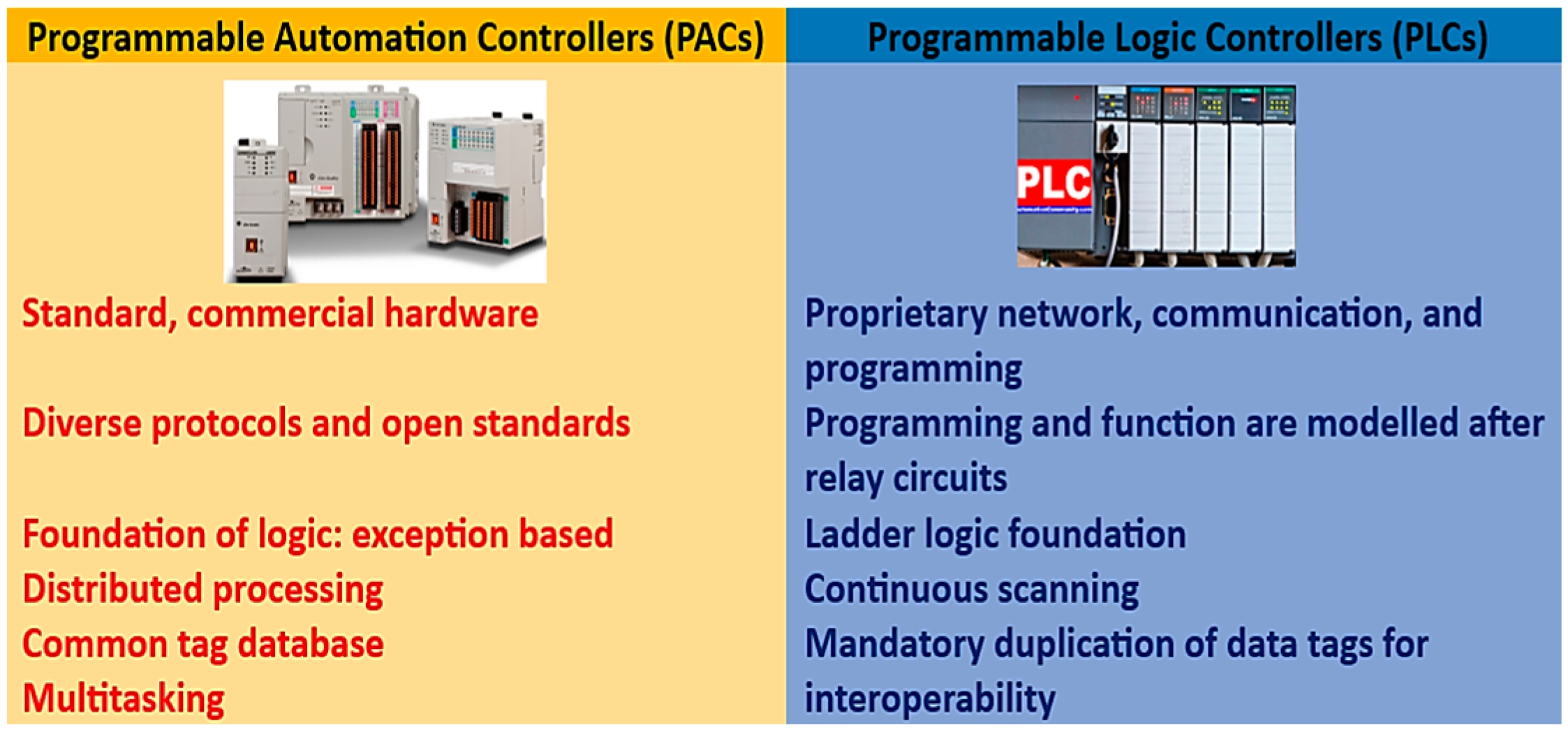

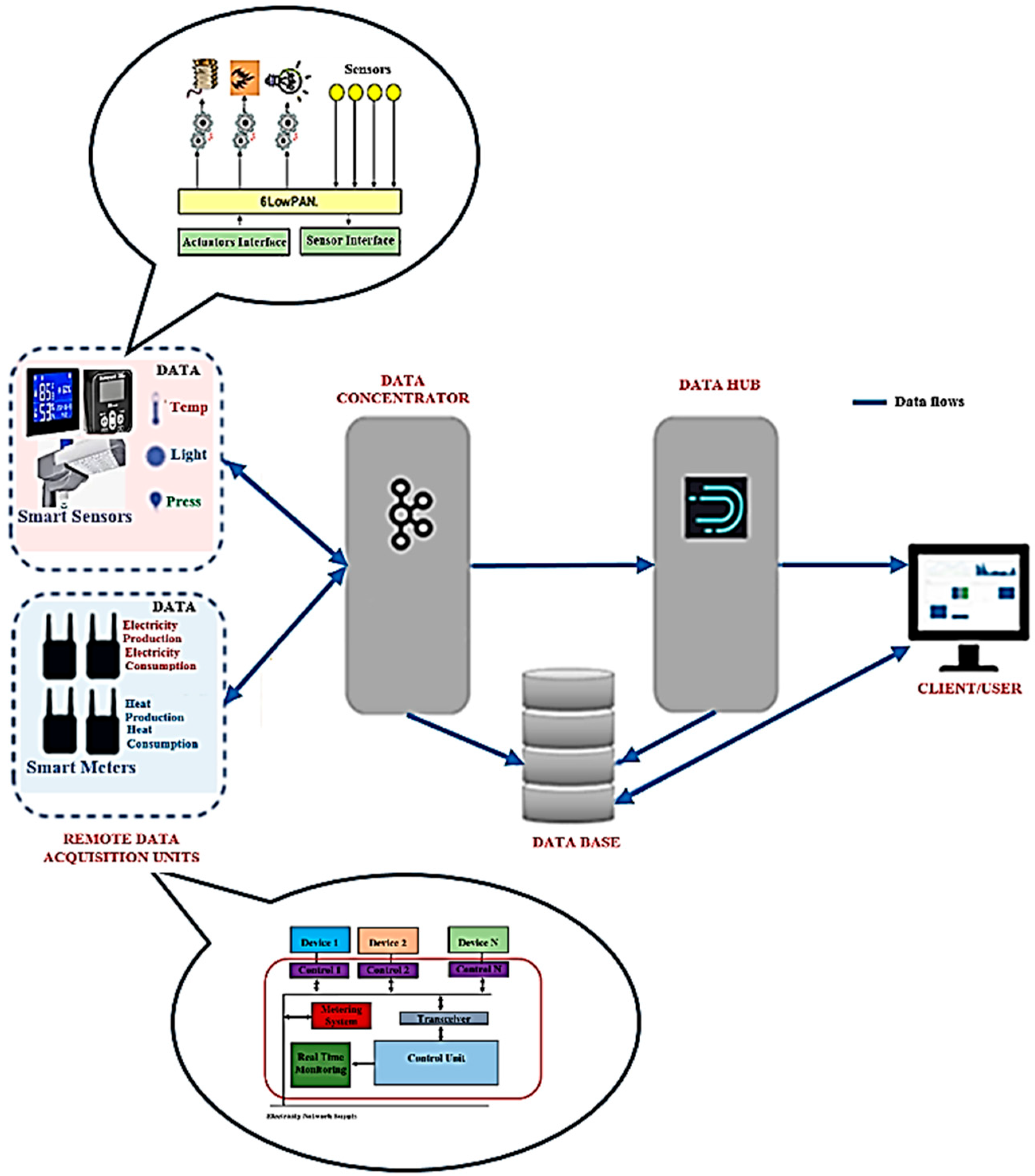

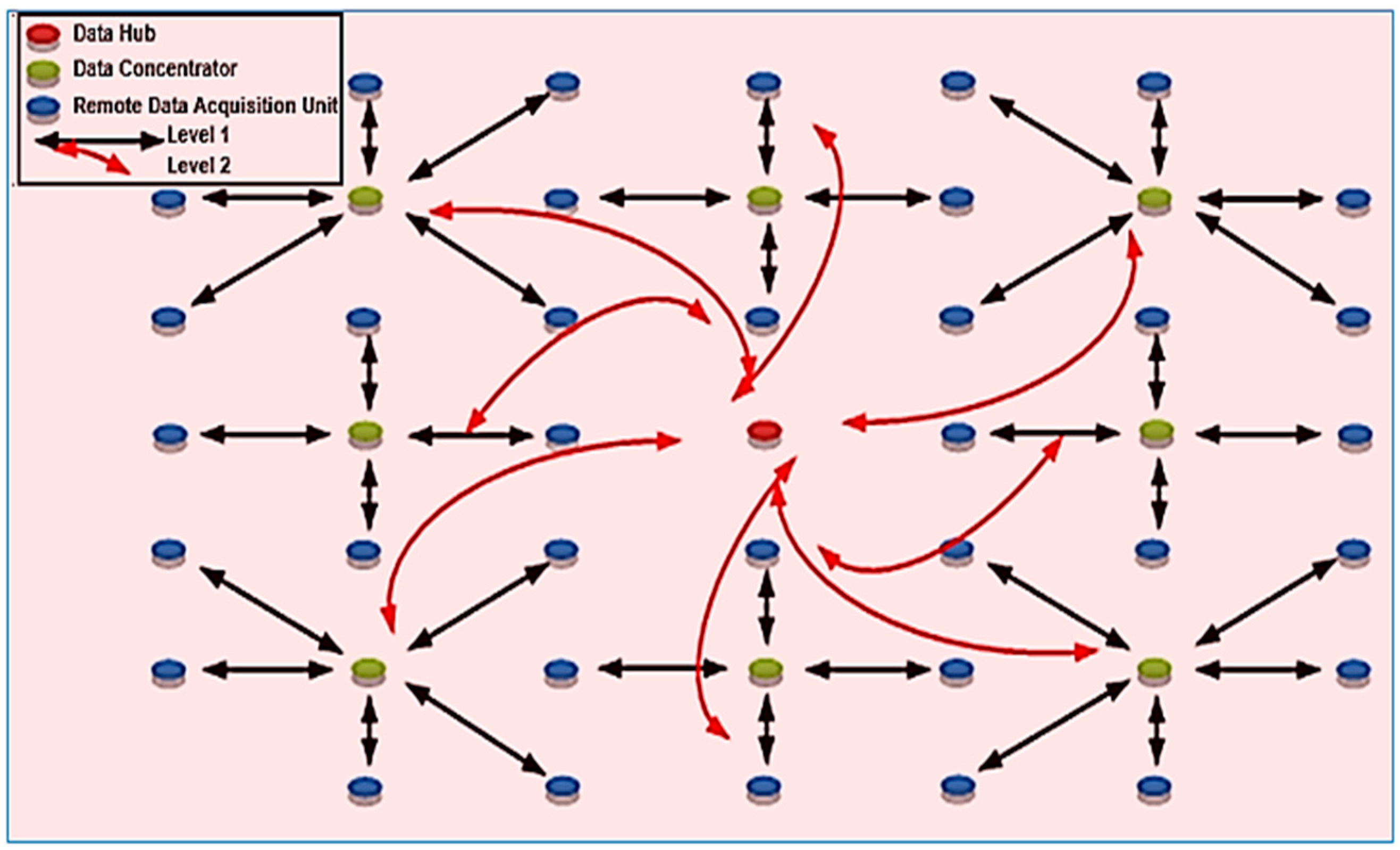
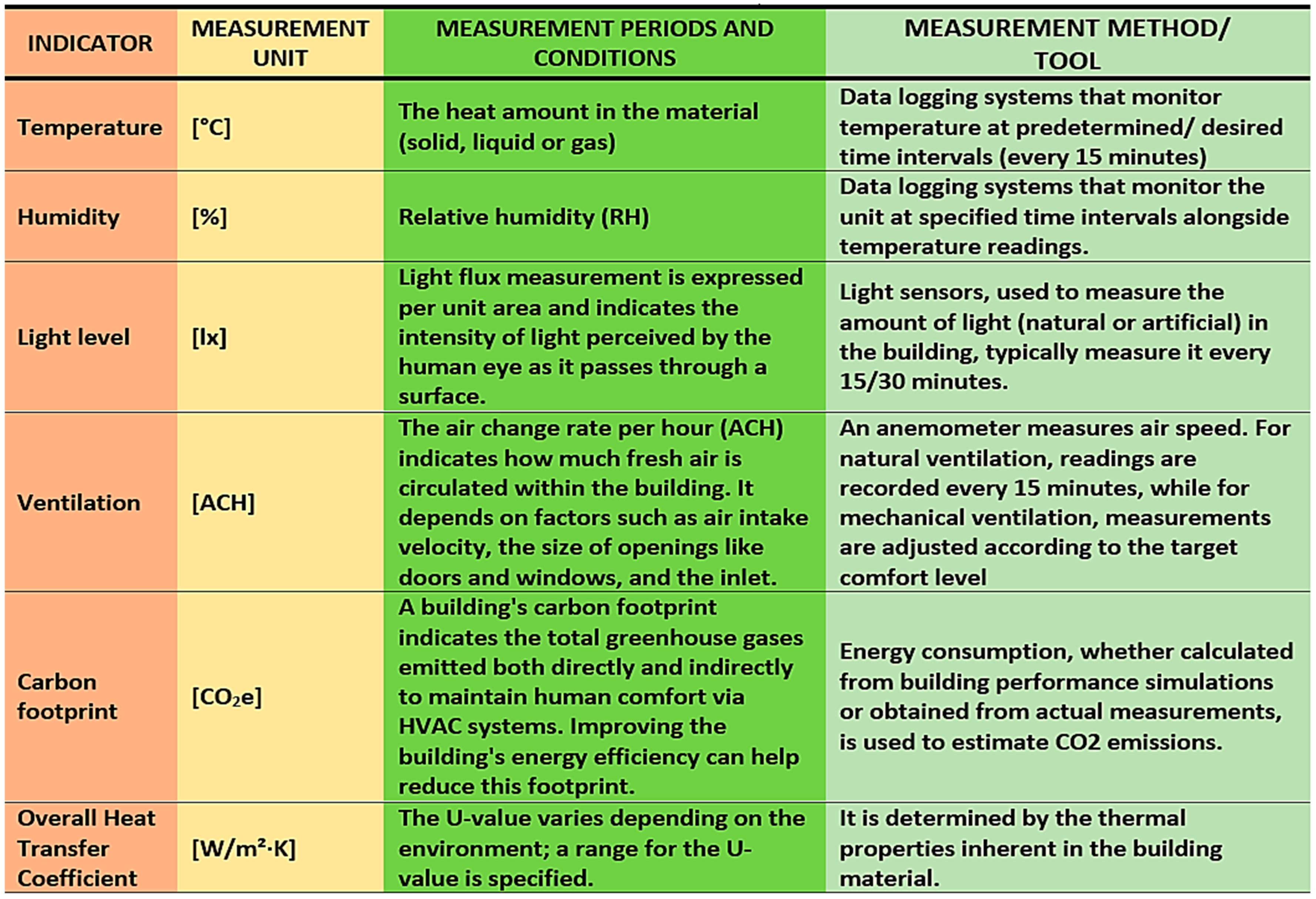
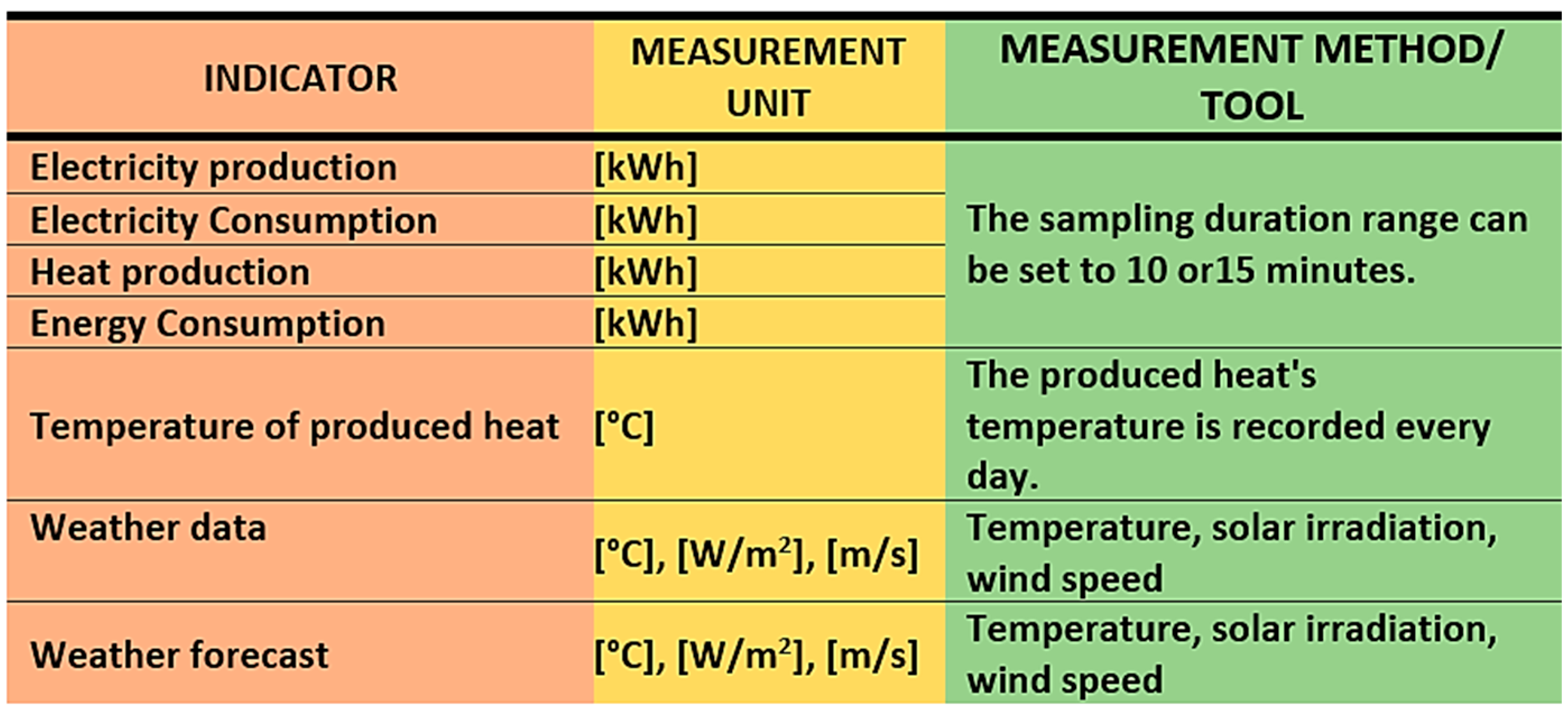
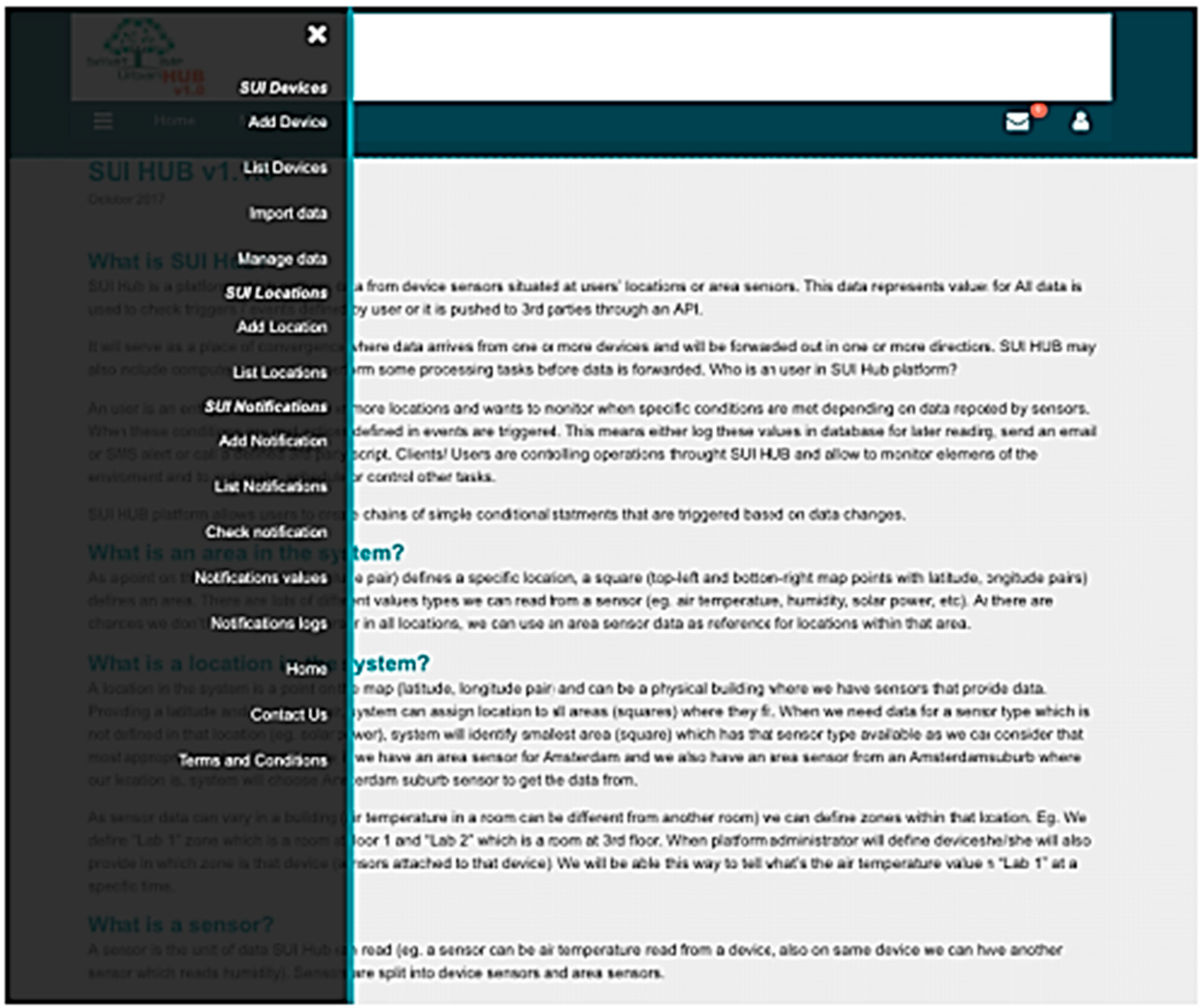
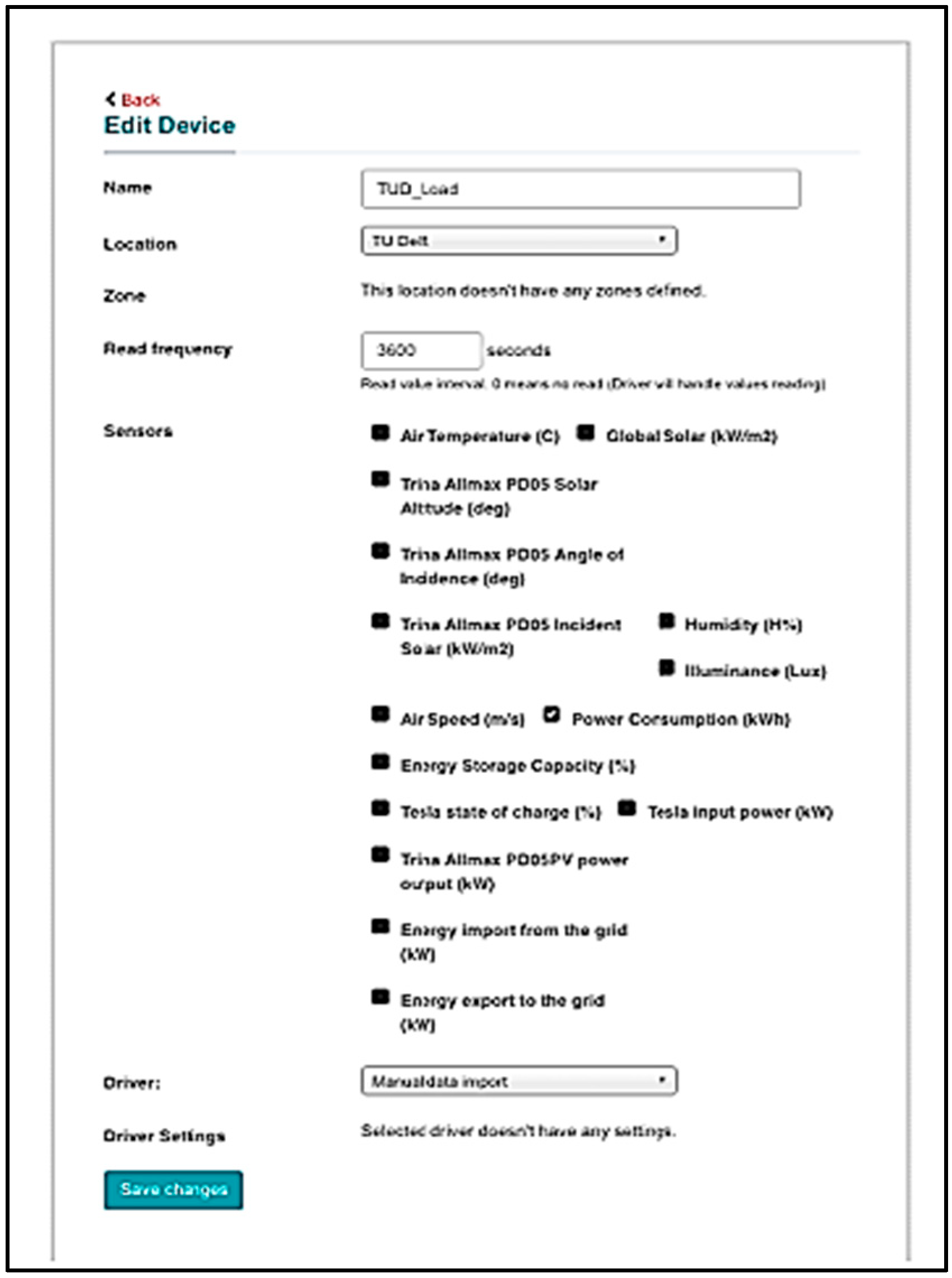
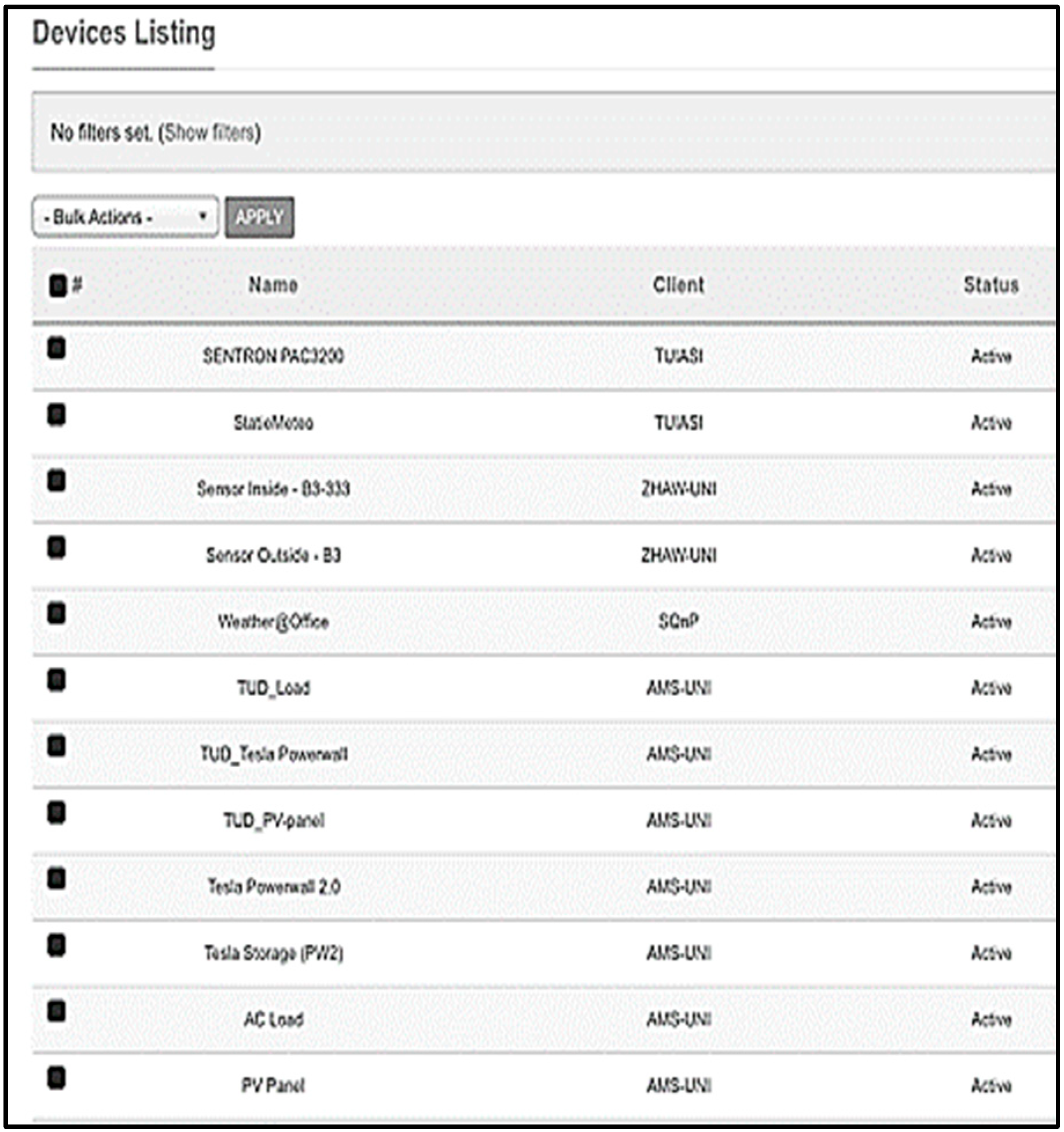


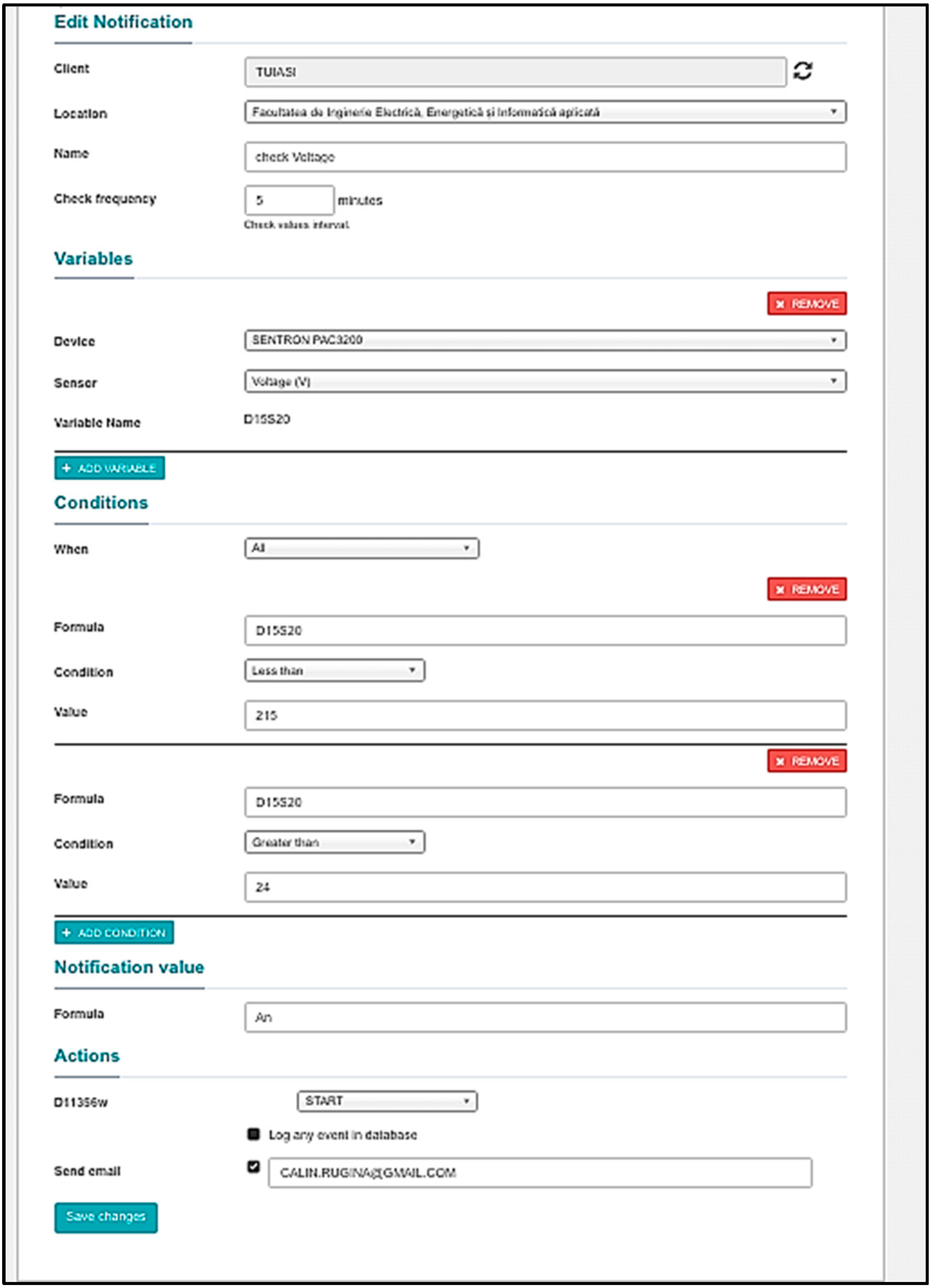
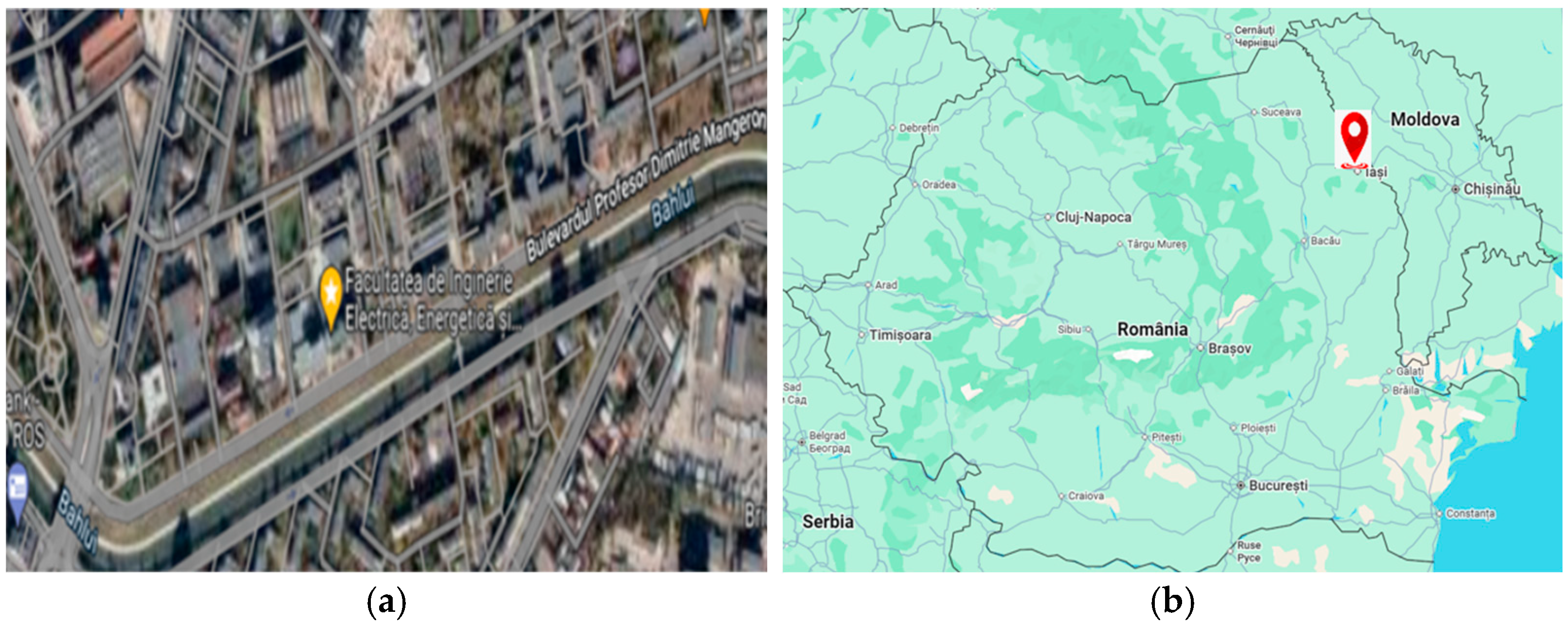
















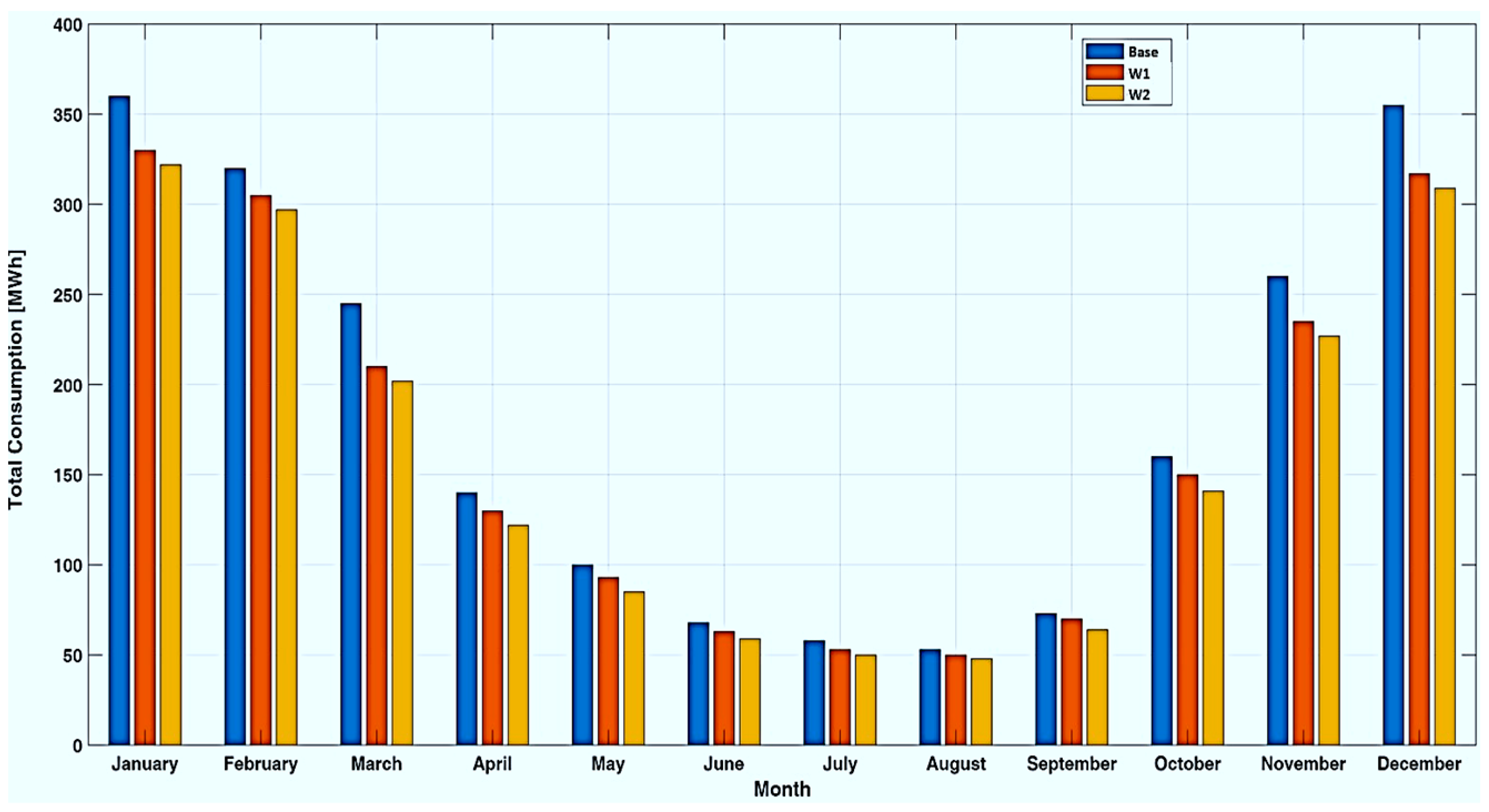
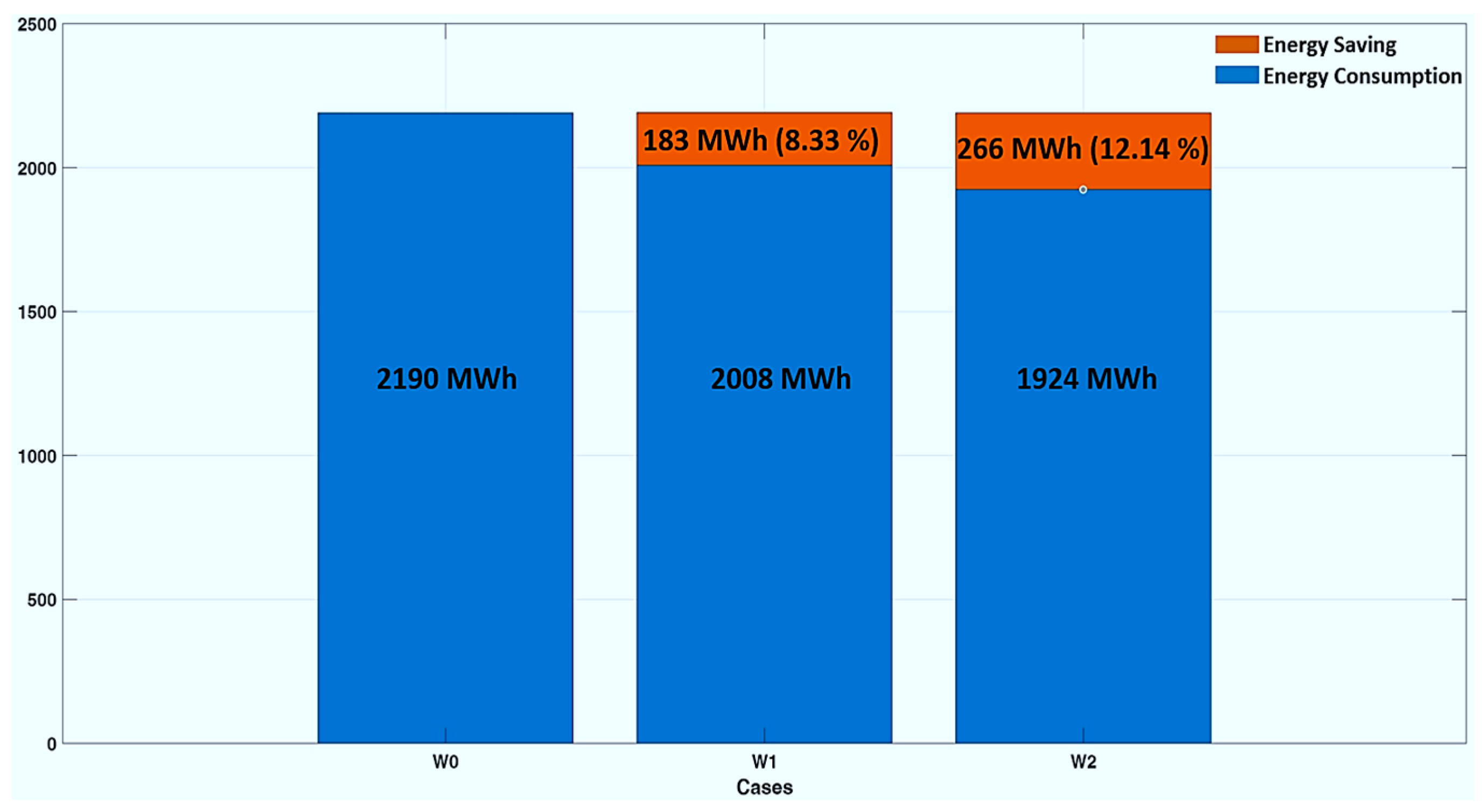
| Ref./ Year | Study/Tasks | Sensors | Smart Meter Infrastructure | Data Security | Analytics Techniques | Additional Simulation Tool | Energy Efficiency Actions Based on KPIs | Buildings’ Type |
|---|---|---|---|---|---|---|---|---|
| [16]/ 2019 | Research/Data analysis and monitoring | IoT | No | No | Yes | Grafana | No | All |
| [17]/ 2024 | Research/Data analysis | IoT | No | No | Yes | Smart PLS | No | Residential |
| [18]/ 2021 | Research/Data analysis and monitoring | No | No | No | Yes | No | Yes | Industrial |
| [19]/ 2023 | Research/Data analysis and monitoring | Classical | No | No | Yes | No | No | Residential |
| [20]/ 2025 | Research/Data analysis and monitoring | IoT | No | No | Yes | No | No | Residential |
| [21]/ 2025 | Research/Data analysis and monitoring | Classical | Yes | No | Yes | No | No | Residential |
| [22]/ 2024 | Research/ Data analysis | IoT | No | No | Yes | No | No | Residential |
| [23]/ 2023 | Research/ Data analysis | No | Yes | No | Yes | No | No | Residential |
| [24]/ 2024 | Review/Data analysis | Classical | Yes | No | No | No | No | All |
| [25]/ 2021 | Research/Data analysis | Classical | No | No | Yes | No | No | Commercial |
| [26]/ 2019 | Research/Data analysis and monitoring | IoT | Yes | No | Yes | No | No | All |
| [27]/ 2022 | Research/Data monitoring and analysis | Classical | Yes | No | Yes | No | No | Residential |
| [28]/ 2024 | Research/Data monitoring | IoT | No | Yes | Yes | No | No | Residential |
| [29]/ 2025 | Research/Data analysis and monitoring | No | Yes | No | Yes | No | No | All |
| [30]/ 2022 | Research/Data monitoring and analysis | Yes | Yes | No | No | No | No | Residential |
| [31]/ 2022 | Research/Data analysis and monitoring | No | Yes | No | Yes | No | No | Residential |
| [32]/ 2025 | Research/Data analysis and monitoring | Yes | Yes | No | Yes | No | Yes | All |
| [33]/ 2023 | Research/Data analysis and monitoring | Classical | Yes | No | Yes | No | No | All |
| Our | Data analysis, monitoring, simulation, and proposal actions | Yes | Yes | Yes | Yes | Yes | Yes | All |
| Nr. Crt. | Parameter | Value |
|---|---|---|
| 1 | Area of ground floor/Level 0, [m2] | 2010 |
| 2 | Area of the first floor/Level 1, [m2] | 2110 |
| 3 | Area of the second floor/Level 2, [m2] | 1720 |
| 4 | Area of the third floor/Level 3, [m2] | 830 |
| 5 | Area of the fourth floor/Level 4, [m2] | 830 |
| 6 | Area of the fifth floor/Level 5, [m2] | 540 |
| 7 | Total floor area, [m2] | 8040 |
| 8 | Shared area, [m2] | 8040 |
| 9 | Heat loss surface, [m2] | 8505 |
| 10 | Surface area of windows that can be opened, [m2] | 29.80 |
| 11 | Window/wall ratio, [%] | 28.00 |
| 12 | Roof area, [m2] | 2110 |
| 13 | Volume, [m3] | 29,440 |
| 14 | U-value of the ground floor, [W/m2K] | 2.06 |
| 15 | U-value of external facades, [W/m2K] | 1.71 |
| 16 | U-value of the roof, [W/m2K] | 2.05 |
| 17 | U-value of windows, [W/m2K] | 5.78 |
| Month | Quartiles | Mean | Standard Deviation | ||||
|---|---|---|---|---|---|---|---|
| Q0 | Q1 | Q2 | Q3 | Q4 | |||
| January | 2927 | 7483 | 11,320 | 13,892 | 17,174 | 10,420 | 4007 |
| February | 4365 | 5811 | 8527 | 11,217 | 16,368 | 8806 | 3292 |
| March | 0 | 2545 | 5472 | 7563 | 11,000 | 5117 | 3009 |
| April | 0 | 811 | 2300 | 3446 | 4981 | 2212 | 1549 |
| October | 0 | 1160 | 2632 | 5525 | 7214 | 3109 | 2352 |
| November | 1136 | 5301 | 7680 | 10,860 | 13,146 | 7844 | 3207 |
| December | 1603 | 4816 | 8392 | 11,247 | 14,834 | 8299 | 4013 |
| Month | Quartiles | Mean | Standard Deviation | ||||
|---|---|---|---|---|---|---|---|
| Q0 | Q1 | Q2 | Q3 | Q4 | |||
| May | 0 | 0 | 841 | 950 | 1274 | 484 | 152 |
| June | 457 | 900 | 1349 | 1728 | 2129 | 1334 | 494 |
| July | 700 | 972 | 1486 | 1841 | 2501 | 1490 | 578 |
| August | 936 | 1338 | 1580 | 1941 | 2450 | 1626 | 413 |
| September | 201 | 404 | 590 | 741 | 966 | 587 | 233 |
| Month | ECW0 | ECW1 | ECW2 | ΔECW1 | ΔECW2 | ΔECW1 | ΔECW2 |
|---|---|---|---|---|---|---|---|
| [MWh] | [MWh] | [MWh] | [MWh] | [MWh] | [%] | [%] | |
| January | 360 | 330 | 322 | 30 | 38 | 8.33 | 10.56 |
| February | 320 | 305 | 297 | 15 | 23 | 4.69 | 7.19 |
| March | 245 | 210 | 202 | 35 | 43 | 14.29 | 17.55 |
| April | 140 | 130 | 122 | 10 | 18 | 7.14 | 12.86 |
| May | 100 | 93 | 85 | 7 | 15 | 7.50 | 15.50 |
| June | 68 | 63 | 59 | 5 | 9 | 7.41 | 13.33 |
| July | 58 | 53 | 50 | 5 | 8 | 8.70 | 13.91 |
| August | 53 | 50 | 48 | 3 | 5 | 4.76 | 9.52 |
| September | 73 | 70 | 64 | 2 | 8 | 2.87 | 11.15 |
| October | 160 | 150 | 141 | 10 | 19 | 6.25 | 11.88 |
| November | 260 | 235 | 227 | 25 | 33 | 9.62 | 12.69 |
| December | 355 | 317 | 309 | 38 | 46 | 10.70 | 12.96 |
| Case | Energy Consumption Components [MWh] | Energy Saving [%] | ||||
|---|---|---|---|---|---|---|
| Heating | Lighting | Cooling | DHW | Total | ||
| W0 | 1470 | 500 | 130 | 90 | 2190 | 0.00 |
| W1 | 1302 | 500 | 115 | 90 | 2008 | 8.33 |
| W2 | 1302 | 417 | 115 | 90 | 1924 | 12.14 |
| Ref. | Measure—Replacing Windows | ||
|---|---|---|---|
| Location | Climate/Average Annual Temperature | Energy Savings | |
| [43] | Changsha Hunan University, China | Humid subtropical/17.8 °C | 10.9 |
| [44] | University of the Basque Country, Spain | Oceanic/15.2 °C | 11.0 |
| BENEFIT | Technical University of Iasi, Romania | Humid continental/10.5 °C | 11.42 |
| Measure—Using LED tubes | |||
| Location | Replaced Lighting Technology | Energy Savings | |
| [45] | Cranfield University, United Kingdom | Incandescent lamps/Fluorescent tubes | 29.5 |
| [46] | Jashore University of Science and Technology, Bangladesh | Incandescent lamps/Fluorescent tubes | 25 |
| BENEFIT | Technical University of Iasi, Romania | Fluorescent tubes | 16.7 |
Disclaimer/Publisher’s Note: The statements, opinions and data contained in all publications are solely those of the individual author(s) and contributor(s) and not of MDPI and/or the editor(s). MDPI and/or the editor(s) disclaim responsibility for any injury to people or property resulting from any ideas, methods, instructions or products referred to in the content. |
© 2025 by the authors. Licensee MDPI, Basel, Switzerland. This article is an open access article distributed under the terms and conditions of the Creative Commons Attribution (CC BY) license (https://creativecommons.org/licenses/by/4.0/).
Share and Cite
Aradoaei, M.; Ciobanu, R.-C.; Schreiner, C.M.; Grigoras, G.; Livadariu, R.-P. BENEFIT: An Energy Management Platform for Smart and Energy Efficient Buildings. Energies 2025, 18, 4542. https://doi.org/10.3390/en18174542
Aradoaei M, Ciobanu R-C, Schreiner CM, Grigoras G, Livadariu R-P. BENEFIT: An Energy Management Platform for Smart and Energy Efficient Buildings. Energies. 2025; 18(17):4542. https://doi.org/10.3390/en18174542
Chicago/Turabian StyleAradoaei, Mihaela, Romeo-Cristian Ciobanu, Cristina Mihaela Schreiner, Gheorghe Grigoras, and Razvan-Petru Livadariu. 2025. "BENEFIT: An Energy Management Platform for Smart and Energy Efficient Buildings" Energies 18, no. 17: 4542. https://doi.org/10.3390/en18174542
APA StyleAradoaei, M., Ciobanu, R.-C., Schreiner, C. M., Grigoras, G., & Livadariu, R.-P. (2025). BENEFIT: An Energy Management Platform for Smart and Energy Efficient Buildings. Energies, 18(17), 4542. https://doi.org/10.3390/en18174542







